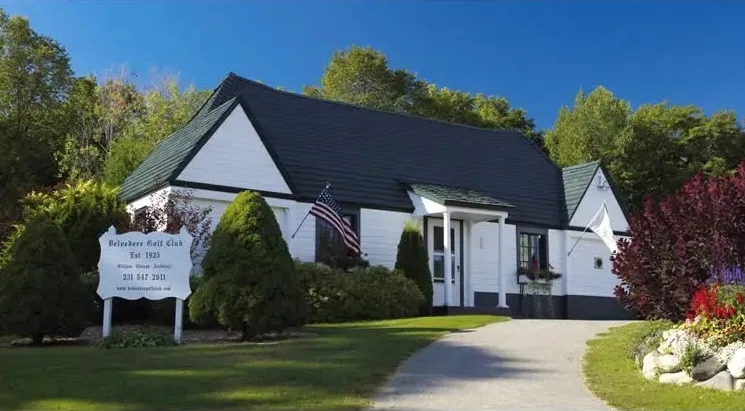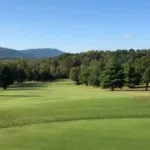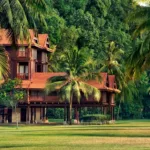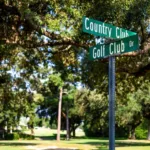
Belvedere Golf Club, Northern Michigan’s historic golf destination renowned for hosting the Michigan Amateur Championship 40 times, marks its centennial in 2025. This William Watson masterpiece exemplifies golden age architecture and continues to captivate golf enthusiasts nationwide.
“Reaching our 100th year while again hosting the prestigious Michigan Amateur Championship is tremendously exciting for Belvedere,” states Tom Folliard, Club President. “Our William Watson classic has truly withstood time’s test, welcoming legends like Hagen, Jones, Hogan, Snead, Watson, and Nicklaus alongside everyday golfers. Belvedere has become inseparable from Northern Michigan’s golf identity.”
Origins and Development
In 1925, ten members of the Belvedere Club—formerly the Charlevoix Home Association established in 1878 as a Lake Charlevoix summer retreat—decided to build their own course. They selected the highlands of the Supernaw and Hooker farms on Marion Center Road and hired renowned architect William Watson. Construction began immediately, with limited play available by 1926 and all 18 holes fully operational in 1927. Since opening, Belvedere has operated following British Isles traditions—maintaining private status while welcoming guests at designated times.
The Architect’s Legacy
Watson, born in 1860 near St. Andrews, brought exceptional credentials to Belvedere. A St. Andrews University graduate and tournament winner, he benefited from extensive discussions with four-time Open Champion Old Tom Morris, who served as St. Andrews’ professional during Watson’s formative years.
After immigrating to America in 1898, Watson designed Minneapolis’ Minikahda Club before moving to California’s booming golf scene. While building his architectural reputation, he spent summers in Charlevoix as the Charlevoix Golf Club professional. By 1925, when Belvedere commissioned him, Watson had earned national distinction alongside contemporaries George C. Thomas, Donald Ross, and Tom Bendelow, having designed over 100 courses including the Olympic Club, Olympia Fields, and Harding Park.
Architectural Recognition
In George C. Thomas’s definitive 1927 work “Golf Architecture in America,” three Belvedere holes—numbers 1, 11, and 16—were featured as Watson’s finest examples. These signature holes showcase raised greens integrated into hillsides with strategically placed bunkers and grassy hollows. Thomas specifically cited hole 11 as exemplifying masterful green construction in a miniature canyon.
The par-4 16th hole perhaps represents Watson’s crowning achievement—a small, irregular green perched on a high shelf demanding exceptional precision, with three sand bunkers positioned to penalize imperfect approaches.
Restoring Watson’s Vision
A remarkable discovery in 2016 transformed Belvedere when Watson’s original 1925 plans were found during a local building demolition. Course architect Bruce Hepner, who had been working on subtle renovations since 2001, used these blueprints to restore greens to their original dimensions and contours.
“The drawings validated what was in the field,” Hepner explains. “You could see the outlines of the actual shaping—the plateaus extended much further. The greens had shrunk significantly over time.”
Hepner notes that Watson’s genius at Belvedere manifested in three key elements: exceptional green site selection with tremendous variety (some high on ridges, others low or on side hills); unique shaping around each green; and innovative drainage solutions that simultaneously created interesting contours while protecting the greens.
A Legacy of Champions
For a century, golf’s greatest players have competed at Belvedere. Walter Hagen, winner of the 1929 Great Lakes Open held there, declared the 16th hole “the best par 4 in America.” Hall of Famer Ken Venturi visited on Gene Sarazen’s recommendation specifically to experience the legendary 16th.
Other champions who have tested themselves against Belvedere include Bobby Jones, Tommy Armour, Ben Hogan, Sam Snead, and Jack Nicklaus. Five-time British Open champion Tom Watson, who vacationed nearby at Walloon Lake throughout his youth, maintains his connection as an honorary member who still visits almost annually. “I love that country up there,” Watson has said. “We’d go for two weeks, then three, and then a month. I went up every summer through college.”
Centennial Celebrations
The Michigan Amateur returns to Belvedere June 17-21, 2025, marking its 41st appearance at the course during the centennial year. This prestigious championship first came to Belvedere in 1930 when legendary Michigan golfer Chuck Kocsis claimed the inaugural event (he would win two more times). From 1963 to 1988, Belvedere served as the tournament’s permanent home, crowning champions including PGA Tour and Ryder Cup player Dan Pohl, a two-time winner.
Beyond traditional golf, Belvedere has established itself as one of America’s premier hickory golf destinations, hosting national events since 2006. In 2019, the club welcomed the U.S. Hickory Open, and in 2023, it hosted The Hickory Grail—a Ryder Cup-style competition between 14 elite hickory players from the United States and Great Britain/Europe. Belvedere stands as the only U.S. club with 44 authentic hickory players.
Today, Belvedere ranks among Golf Digest’s America’s 100 Greatest Public Courses, GOLF Magazine’s Top 100 Courses You Can Play in the U.S., and Golfweek’s Top 200 Classic Courses.
For more information, visit www.belvederegolfclub.com.









